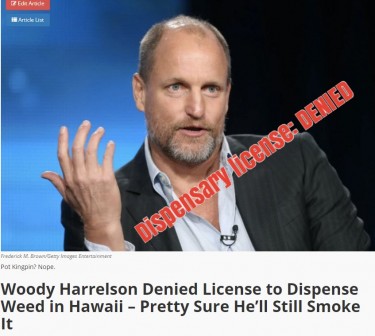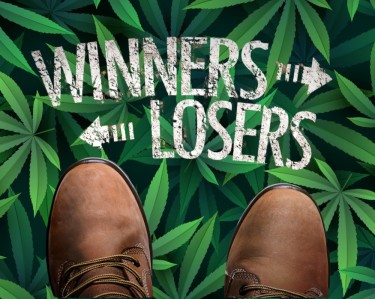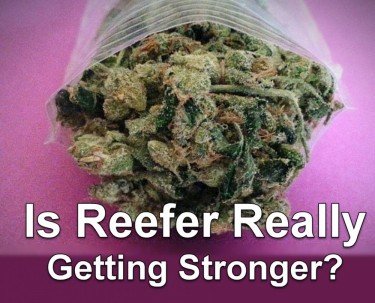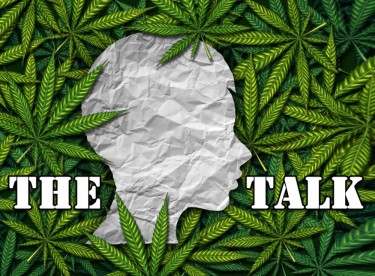Cannabis News
Woody Harrelson vs. the Church of Covid
Published
1 year agoon
By
admin

Woody Harrelson, famed actor and seasoned stoner unleashed living hell on Saturday Night Live with his opening Monologue which by now you may have heard about due to the “media machine” pumping out counter opinion to what he said.
But, if you have been living under a rock and want me to tell you what it’s all about – let me give you the skinny as they say.
Firstly, before the part that has everyone’s panties in a knot, he went on a long monologue talking about his cannabis use, his political affiliations and to be honest – he looked very stoned throughout the process.
As the monologue came to a close however, he talks about this “fictional script” that he received in 2019. The preamble to the punch line however, sets up the scene where he’s high, reading the script in central park when all of a sudden he says;
“So the movie goes like this… The biggest drug cartels in the world get together and buy up all the media and all the politicians and force all the people in the world to stay locked in their homes,” he said. “And people can only come out if they take the cartel’s drugs and keep taking them over and over.”
He ends off by saying, “I threw the script away, who was ever going to believe that stuff anyway!”
And just like that, he “Red Pilled” a bunch of folks on the “left” and the rage machine began churning hit pieces against the actor. Of course, by me simply using the term “red pill”, I’m not automatically associated with the “right” of which anyone who has read my work would know is not true.
In fact, in the world of “right and left” – I’m definitely up!
Headlines like, “Harreslon echoes “conspiracy theories” and other titles rang similar tones of disapproval. Here’s a screenshot of the “pharma bought” propaganda machine in response to the actor’s joke.
As you can see here, every single article on the Google top search results for the term “Woody Harrelson SNL monologue 2023” comes up with this. And that is to be expected.
You see, it’s a fascinating subject matter to analyze the whole “Church of Covid” narrative because what happened to dear old Woody is simply a reaction from an entity that lives within the mass consciousness of millions of people around the world.
Let’s take a moment and re-examine who we were pre-covid and the world as we knew it. Perhaps, by examining the sociopolitical climate of 2019 can we understand how we ended up in such a bizarre timeline where Bond-like villains meet in secret castles deciding the fates of millions.
Who we were in 2019?
I don’t know if you remember, but I do. Right before the world got “locked down” for a few years and held hostage at the idea of “mass death” while being forced to accept a singular truth or be shunned from the whole of humanity.
The world was a divided place. There were riots in China that seemed to scare the government. Trump’s presence in the world of politics wobbled the norm enough to send people into a tribal frenzy. Lines were being drawn, sides were getting picked.
Ideas were being challenged.
The MAGA cult was getting behind their man “The Donald”, who for some obscure reason became the champion of a totally forgotten part of the US fabric. Easily dismissed, but in fact – a very diverse crowd of people.
Perhaps “The Donald’s” antihero shittalking memed lifestyle was all the people needed to say “fuck it…I’m IN!”
I was like, “Wait a minute…THAT guy?”
But by that time the hats consumed them, they became a part of the whole.
On the other side, it seemed like the Democrats peaked on Obama. Who objectively was an amazing smooth talker – but also did horrific shit and advanced terrible plans. And those politicians that followed were simply the scummiest, most abysmal options available.
You’d think, “There’s no way the intellectual left would pick these idiotic…”
Only to hear them complain about people not calling them the names they prefer to be called. As if that’s an “actual problem”.
Identity is certainly a personal thing. However, anyone who needs the affirmation of others to assume their identity is an imposter within their own mind. You either are, or you are not. There is no maybe.
Nonetheless, the fractal nature of “identity” means that there are endless “smart-sounding bullshit” to consume that seem important enough to waste your life away, feeling like you’re “actually doing something” when in reality you’re doing nothing of major significance.
And this was the stage of the world prior to the pandemic. And then, a few months after 2020 kicked off…the world’s largest drug cartels shut down the world, locked people up and forced them to take a drug or ELSE…
What happened then was a deepening of personal narratives. Those on the “left” and those on the “right” dug deeper trenches, demonized the other even harder and decided that their opinions are the only ones that are valid.
The first casualty was that of truth, as opposing views were being censored for the “greater good”, while actual data was being obscured by the people that were “allegedly” our saviors (aka Big Pharma).
And this is the chord that Harrelson struck…and as a reaction, the Church of Covid rose up.
Why do you call it “Church of Covid?”
While those who are avid defendants of the vaccine mandates and believe that the government nor pfizer had any wrongdoing throughout the entire pandemic claim to be “based in science” – they acted very “unscientific” by silencing any voice that didn’t fit the mainstream narrative.
For example, the whole notion of “Natural Immunity” meant that you were “anti-vax” when you simply were hesitant about a drug that was rushed to market without proper longevity testing or even control groups.
You were shunned, called a plague rat, deplatformed, ridiculed, by the mainstream and their supporters. Your person was attacked, you were called vile…you were out to kill Grandma!
All of these narratives are very extreme in nature. And to question anything of the narrative meant heresy.
And this is why I believe it’s a “Church of Covid” and not a rational, scientific debate around a pandemic.
“Dogma” is defined as “Any belief held unquestioningly and with undefended certainty.” It’s a set of “principles” that are laid out and that if you were to challenge them, you’d be met with virtually the same intensity as if you were to question the birth of Jesus.
Don’t believe me? Check out the responses to Harrelson’s monologue on one of the most “left leaning” billionaire owned publications “The Washington times”.
Here’s a comment from “Knitgirl”
Yeah- I will take medical advice from pot head Woody Harrelson. Just like I took it from Trump and the My Pillow guy. And just in case anyone thinks I am serious- guess again
And one from “B-H Carter”
They aren’t “conventional thoughts”, they are facts. And, no, harmful nonsense should not be given a platform. The vaccines are safe. Period.
Another comment from MacBeadWeaver
My mother died of COVID. An old friend’s 44 year old daughter also died of COVID. A few weeks ago SNL allowed antisemitic tropes from Dave Chapelle and now this from Woody H. I’m really done with SNL helping fascism take over America.
And let’s be fair…many people did lose loved ones to the Covid Pandemic, however, even within these statements of sentiment, we can see how the scientific bias is present.
For example, in the first comment from KnitGirl, we can see that she immediately equated Harrelson with a “Trump” supporter, this despite the fact that he claims to be neither left nor right but purple. I’m sure Harrelson did NOT vote for Trump and probably doesn’t follow his political ideas at all – yet due to the fact that he spoke against the “Holy Covid Doctrine”, he now must be “othered” by the Church and protested.
Just like the Christian Church did when Marilyn Manson plays a rock concert near their place of residence.
And yes, you shouldn’t take medical advice from an actor…it’s the dumbest thing to do…which is why his comments should not be taken seriously. Because if you “don’t take medical advice” yet find offense posture on things – then it simply means that you DO take his words seriously, perhaps not for the same reasons as you might claim – yet serious enough to warrant a comment on an article.
Or let’s take the comment from B-H Carter,
“The vaccines are safe. Period”
The most scientific statement of the century. A statement that closes off all scientific inquiry. It’s almost like “God Exists – Period!”
Except, VAERS have reported more than 50,000 vaccine related injuries in 2021, and to find any accurate data on any of these things is nearly impossible. For every report, there are 10 “Counter reports” floating about – and most of these counter reports are funded by…you guessed it – your pals at Pfizer.
Furthermore, no vaccine is “safe”. There’s always inherent risks and this is why vaccines are supposed to be taken on a “case by case” basis.
However, if you said this in 2020 and 2021, you would have been violently attacked for these ideas. However, in 2023, Natural Immunity is science once more, the Lab Leak is definitely plausible, and people do have strange reactions to the vaccine…such as women’s menstrual cycles being affected.
Yet once again, “CONSPIRACY” if you would have said that a few years ago. Hell, it’s still true today.
The final comment is probably the one that is most difficult. People lost loved ones. They believe that “the vax saved them”, and there might be some truth in this, but we won’t know for sure. This is because any idea of a control group was shunned….everybody gets it or else!
However, the final comment is what makes the strongest case – “If you believe like X, you’re a racist, fascist…but hey, ignore the literal Nazis in the Ukrainian army…they fight for freedom!”
Yes, I also went there.
And this is why this is a religion and not reason. It’s scientism and not science. And the mere fact that Harrelson received a onslaught of negative articles only strengthens the point.
What Harrelson said isn’t “wrong”.
Let’s look at the facts…
-
Pfizer is literally a drug cartel as “Cartel” is defined as “A combination of business firms to control world markets and fix prices.”
-
Pfizer has a long history of human rights violation and criminal business practices. You can read their transgressions here.
Just to put into context the type of business Pfizer is, here’s a quote from one of their transgressions:
Pfizer apparently engaged in questionable practices abroad as well. In 2000 the Washington Post published a major exposé accusing Pfizer of testing a dangerous new antibiotic called Trovan on children in Nigeria without receiving proper consent from their parents. The experiment occurred during a 1996 meningitis epidemic in the country. In 2001 Pfizer was sued in U.S. federal court by thirty Nigerian families, who accused the company of using their children as human guinea pigs.
In 2006 a panel of Nigerian medical experts concluded that Pfizer had violated international law. In 2009 the company agreed to pay $75 million to settle some of the lawsuits that had been brought in Nigerian courts.The U.S. case was settled in 2011 for an undisclosed amount.
Classified U.S. State Department cables made public in 2010 by Wikileaks indicated that Pfizer had hired investigators to dig up dirt on Nigeria’s former attorney general as a way to get leverage in one of the remaining cases. Pfizer had to apologize over the revelation in the cables that it had falsely claimed that the group Doctors Without Borders was also dispensing Trovan during the Nigerian meningitis epidemic. – SOURCE
They also settled one of the largest fraudulent advertisement cases in 2009 totalling $2.3 billion. “In 2009 the company had to pay a record $2.3 billion to settle federal charges that one of its subsidiaries had illegally marketed a painkiller called Bextra.”
-
Pharma funds roughly half of the FDA budget, but also portion of the CDC.
-
Pharma pays significant money to media agencies
-
Pharma pays significant in political lobbying. In fact, they spent $11, 000,000 in lobbying expenses in 2019, and even more the following years.
-
They wanted to seal the data on the Covid Vaccines for 75-years
So, a major drug cartel, who pays politicians, the media and funds organizations meant to regulate them – have no conflict of interest?
You cannot question their business practices? You cannot question the efficacy of their medicine? They are protected from public scrutiny and if anyone questions it…they are immediately ostracized.
If this doesn’t sound like a religious movement to the degree of catholics defending priests who molest little children – then I don’t know what is.
Stay Purple…
The reason I decided to write this article is because like Harrelson…I’m neither left nor right. I don’t subscribe to political ideology and have very little trust in the institutions that are meant to regulate us – especially how they behaved during the pandemic.
As a stoner…I’ve been writing on Pharma’s wicked ways for a long time. I know how they influenced politics to keep drugs like cannabis and psychedelics off the market – since it would destroy their profit margins.
I, for one, applaud Harrelson for his ballsy move…I think the world is ready to start asking the tough questions, and those that defend the Pharma camp might come under scrutiny one of these days.
People are rightfully angry…from where I’m sitting, Pharma had a major role to play in the proliferation of the fear of covid and it is my hope that one of these days…we take on that beast. Because, like the parasite it is – it must keep us sick in order for it to survive.
So perhaps it took one stoner to say some crazy stuff on TV to shift the conversation back to a place where disagreeing with the official consensus doesn’t end up with you locked in a tower until the day you die…
MORE ON WOODY AND WEED, READ ON…
You may like
-


The 3 Biggest Winners from Rescheduling Cannabis?
-


Tribally owned marijuana store numbers up 25% since 2023
-
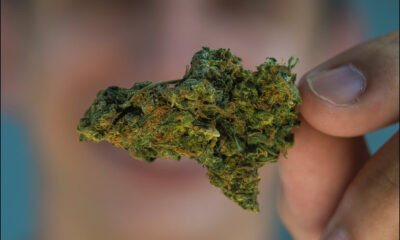

How Potent is Illegal Weed
-


Is Your Kid Smoking or Vaping Weed?
-


Press Release: PsychedelicNewsWire Named Official Media Sponsor of the 4th Annual Psychedelic Therapeutics and Drug Development Conference
-


Memorial Day’s best weed, prerolls, carts, and more 2024
Cannabis News
The 3 Biggest Winners from Rescheduling Cannabis?
Published
3 hours agoon
May 20, 2024By
admin
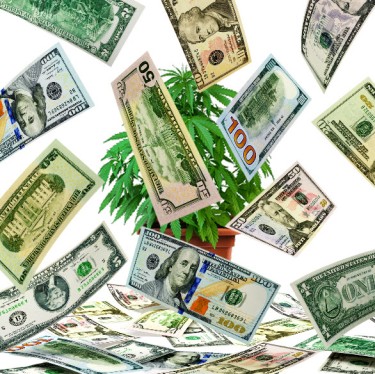
President Joe Biden’s support of the administration’s decision to reschedule cannabis from Schedule I to Schedule III is likely to result in considerable financial benefits for large, legal cannabis businesses and the illicit market. This action may lessen the restrictions imposed by IRS tax regulation 280E, which has banned cannabis businesses from deducting standard business expenditures. Which cannabis firms will gain the most from this change?
The illicit market will get a huge boost by removing the punshiments associated with getting caught dealing or transporting a Schedule 1 drug. Now that the fines, prison sentences, and desire to enforce Schedule 3 crimes is lessened, look for the illicit market to boom across America. It is estimated that the illegal cannabis market is 3x the size of the legal US market as of 2024, so look for that multiple to expand if Schedule 3 is enacted. Removing a negative incentive in economics always leads to predictable action.
In the legal market, the largest MSOS, or those that paid the most taxes, have the most to gain by a repeal of the 280E tax code and future tax credit or refunds coming their way
Industry Leaders in Tax Payments
Rescheduling cannabis will abolish the onerous 280E tax law, potentially freeing up more than a billion dollars in tax savings for the business. Curaleaf (OTC: CURLF) and Trulieve (OTC: TCNNF), both of which make considerable tax payments, are among the firms most likely to profit. Repealing 280E limits would allow these businesses to deduct typical business costs, greatly improving their financial situation.
Truelive alone stands to get $113,000,000 in tax refunds and savings!
Senior analyst Pablo Zuanic of Zuanic & Associates believes that these tax reductions may result in improved cash flows, allowing these businesses to reinvest in development and growth. In the quickly changing cannabis market, having this kind of financial flexibility is essential for keeping a competitive advantage and encouraging creativity.
Zuanic has consistently highlighted the disparity between current market valuations and the potential upside, particularly if federal legalization occurs. He emphasizes that immediate cash flow improvements could lead to substantial revaluation of these companies. By enabling the deduction of ordinary business expenses, the financial statements of these companies would more accurately reflect their true profitability, attracting more investors and boosting market confidence.
The potential tax savings are a temporary relief and a game-changer for the industry. Analysts believe that the improved cash flow could result in substantial revaluations of cannabis companies. For Curaleaf and Trulieve, this change would mean their financial statements would better represent their actual profitability, leading to increased investments and further expansion opportunities.
Curaleaf’s Financial Outlook
Beacon Securities’ Russell Stanley sheds light on Curaleaf’s financial landscape, highlighting the company’s adept management of operating cash flow. This proficiency facilitated a successful debt repurchase post-quarter, significantly enhancing its financial stability. With the anticipated rescheduling of cannabis and the potential enactment of the SAFER Banking Act, Curaleaf stands to benefit from a transformed financial environment, potentially witnessing a substantial surge in its operating cash flow by up to 92% and free cash flow by 188%.
Wedbush Securities recently released a report on Curaleaf, elevating the stock’s 12-month price target from $6.00 to $7.00 while maintaining a buy recommendation. The report underscores Curaleaf’s commendable performance in key domestic markets like Connecticut, Arizona, Maryland, and New York. Projections indicate a revenue uptick to $1.50 billion by 2025, coupled with improvements in overall profitability. This optimistic forecast reflects the company’s robust financial position and its strategic market presence.
Proactive debt management techniques and well-thought-out market positioning highlight Curaleaf’s potential for long-term development and financial success in the changing cannabis industry. Curaleaf is in a strong position to benefit from the rescheduling of banking and cannabis legislation, which may lower regulatory obstacles and further establish the company’s leadership in the cannabis market.
Unlocking Trulieve’s Growth Potential
Trulieve’s Growth Trajectory
Trulieve’s growth trajectory is drawing attention, particularly from Needham’s Matt McGinley, who emphasizes the company’s operational efficiency. McGinley points out that Trulieve has achieved its highest gross margin and EBITDA rates observed in over two years, indicating strong operational performance. This efficiency positions Trulieve favorably for capitalizing on emerging opportunities in the cannabis market.
Key legislative advancements in pivotal markets such as Florida and Pennsylvania present significant growth potential for Trulieve. As these markets potentially transition to adult-use cannabis, Trulieve stands to benefit from increased demand and expanded market reach. Leveraging its operational efficiency and established market presence, Trulieve is poised to capitalize on these legislative shifts to drive revenue growth and enhance shareholder value.
Trulieve is positioned to be a major participant in the growth of the cannabis sector due to its strategic focus on operational excellence and its flexibility in responding to changing regulatory environments. Trulieve is in an excellent position to maintain its growth trajectory and establish itself as a top cannabis supplier, thanks to encouraging legislative changes and a proven track record of high performance.
Analysts’ Industry Impact Assessment
Viridian Capital Advisors offers insights into the industry impact, noting that ten MSOs exceeded EBITDA estimates by $37 million in the first quarter of 2024. This performance suggests that initial projections may have been conservative, indicating a positive trend for cannabis companies. Analysts from Viridian specifically highlight Curaleaf and Trulieve, among others, as poised to benefit from the financial changes resulting from the removal of 280E tax restrictions.
The long-term outlook for the cannabis industry remains bullish, with potential federal legalization driving substantial valuation growth. Pablo Zuanic from Zuanic & Associates suggests that the US market alone could justify over $110 billion in valuations by 2030 assuming federal legalization. The removal of tax restrictions would directly impact bottom lines, potentially leading to significant valuation increases for many cannabis stocks.
All things considered, the possible repeal of the 280E tax laws offers cannabis businesses a big chance to improve their financial standing and market value. As analysts speculate that early projections may have overestimated the sector’s potential, businesses like Curaleaf and Trulieve might gain from more cash flow and better profitability, setting them up for long-term success in the changing cannabis market environment.
Bottom Line
The impending rescheduling of cannabis and the potential repeal of IRS tax regulation 280E offer a substantial opportunity for cannabis companies to strengthen their financial positions and market appeal. Industry leaders such as Curaleaf and Trulieve stand to benefit significantly, with projected increases in cash flow and profitability paving the way for sustained growth. Analysts anticipate a positive market response, with potential valuation growth and a bullish outlook for the long-term trajectory of the cannabis industry. These regulatory changes mark a pivotal moment, allowing businesses to capitalize on newfound financial flexibility and attract investor confidence. As the sector continues to evolve, Curaleaf, Trulieve, and other key players are positioned to thrive, driving innovation and shaping the future of the cannabis market.
WINNERS AND LOSERS FROM SCHEDULE 3, READ ON…
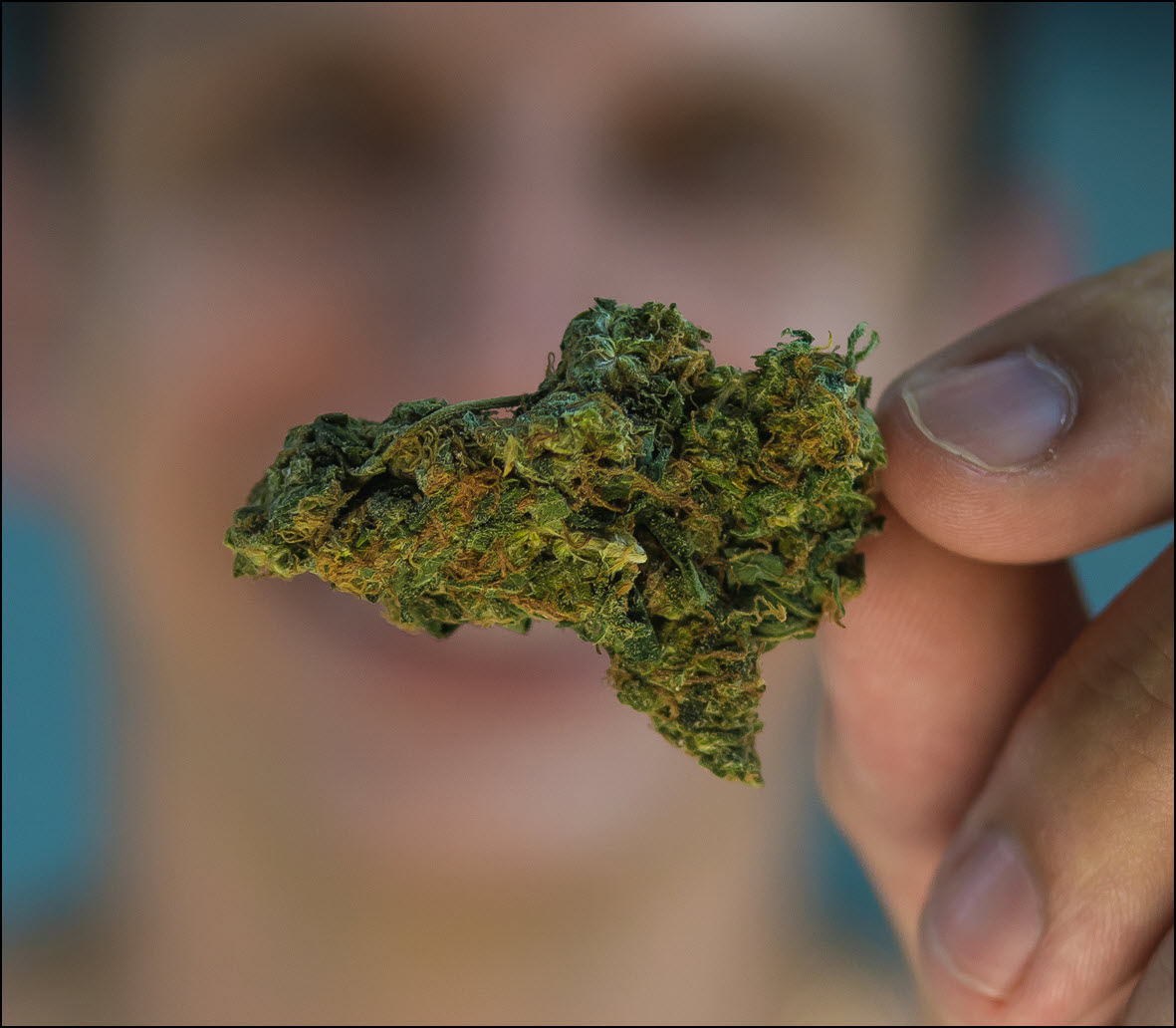
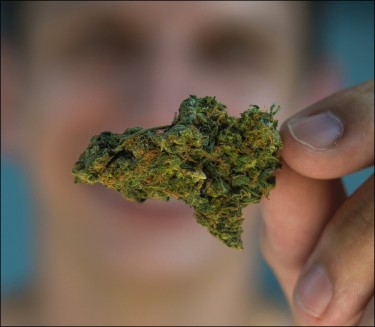
The average THC potency of illegal weed is only 16%, same as legal cannabis says DEA?
In the ever-changing landscape of cannabis, a striking revelation has come from the U.S. Drug Enforcement Administration (DEA). A recent statement established that the average potency of illicit marijuana flower stands at a industry standard of 16%. Understanding the implications of such a percentage requires a deeper dive into the realm of cannabinoids, particularly THC (tetrahydrocannabinol).
The Evolution of THC Potency
THC is the main psychoactive compound in marijuana, responsible for the “high” that users experience. The potency of marijuana, measured by its THC content, has dramatically increased over the past few decades. To understand the context:
-
1980s:The average THC content of seized marijuana was below 4%.
-
1990s: This figure began to climb, reaching around 5-6%.
-
2000s: Potency continued to increase, hitting approximately 10-12%.
-
2020s: Current reports indicate an average of 16%, with some samples even exceeding 30%.
This increase is primarily due to advanced cultivation techniques, genetic selection, and the growing demand for stronger marijuana.
Factors Contributing to Increased THC Potency
Several factors have contributed to the rising THC levels in illicit marijuana:
-
Selective Breeding: Growers have increasingly focused on breeding strains with higher THC content to meet market demand.
-
Advanced Cultivation Techniques: Techniques such as hydroponics, controlled environments, and optimized nutrient delivery have enabled the production of more potent marijuana.
-
Genetic Modification: Some strains have been genetically modified to enhance THC production.
Public Health Implications
The rise in THC potency has several significant public health implications:
-
Increased Risk of Negative Effects
-
Heightened Anxiety and Paranoia: Elevated THC levels can induce intense anxiety and paranoia, especially in inexperienced users or individuals with existing mental health issues.
-
Acute Psychosis: The likelihood of encountering psychotic episodes rises significantly with higher doses of THC.
-
Cognitive Decline: Prolonged use of marijuana with high THC content can result in enduring cognitive impairments, particularly impacting memory and learning abilities.
-
Adolescents: Young users are more susceptible to the negative effects of high-THC marijuana, including impacts on brain development.
-
Individuals with Mental Health Issues: Those with pre-existing mental health conditions may experience exacerbated symptoms.
Regulatory and Law Enforcement Challenges
The DEA’s report underscores significant obstacles faced by law enforcement and regulatory agencies:
-
Persistent Black Market: Despite legalization in several states, the black market for marijuana persists, often offering more potent products than those available in legal dispensaries.
-
Ensuring Consumer Safety: The unregulated nature of black market products results in unpredictable potency and potential contamination with harmful substances.
To address these issues, regulatory bodies need to:
-
Implement Stricter Controls: Introduce more stringent regulations for marijuana potency in both legal and illegal markets.
-
Increase Monitoring and Enforcement: Enhance efforts to monitor and dismantle illegal growing operations.
-
Educating Consumers: Consumer education is crucial in mitigating the risks associated with high-THC marijuana
-
Public Awareness Campaigns: Launch campaigns to inform the public about the potential dangers of high-THC marijuana.
-
Educational Programs: Develop programs targeted at specific groups, such as adolescents, to educate them about the risks.
Key points to emphasize in these programs include:
-
Understanding THC Levels: Educate consumers on how to read and understand THC levels on product labels.
-
Recognizing Symptoms of Overconsumption: Teach users how to recognize signs of overconsumption and what to do if they experience adverse effects.
-
Safe Consumption Practices: Promote safe consumption practices, including starting with low doses and waiting to see the effects before consuming more.
Future Trends and Research
Ongoing research and monitoring are essential to adapt to the evolving marijuana market:
-
Long-term Health Effects: Conduct studies to understand the long-term health effects of high-THC marijuana use.
-
Impact on Mental Health: Investigate the relationship between high-THC marijuana use and mental health conditions.
-
Comparative Studies: Compare the effects of high-THC marijuana with other forms, such as CBD-dominant strains, to provide a comprehensive understanding of marijuana’s impact.
Potential Solutions and Innovations
To address the challenges posed by high-THC marijuana, several solutions and innovations can be explored:
-
Development of Low-THC Strains: Encourage the development and use of low-THC, high-CBD strains that provide therapeutic benefits without strong psychoactive effects.
-
Improved Testing Methods: Invest in better testing methods to accurately measure THC content and detect contaminants.
-
Policy Reform: Advocate for policy reforms that support research and responsible use, including:
-
Incentives for Low-THC Products: Provide incentives for the production and sale of low-THC products.
-
Support for Medical Marijuana Research: Increase funding and support for research into the medical uses of marijuana.
Industrial and Economic Implications
The rise in THC potency also has significant industrial and economic implications:
The marijuana industry has become a significant economic driver in states where it is legal, contributing to tax revenues and job creation.
However, the black market remains a substantial challenge:
-
Revenue Losses: Illegal sales undermine tax revenues that could be used for public health and safety programs.
-
Market Competition: Legal businesses face unfair competition from black market operators who do not adhere to regulatory standards.
Engaging Stakeholders and Community
A critical aspect of addressing the challenges associated with high-THC marijuana is engaging with and gaining the support of local communities, policymakers, and industry leaders. The Ohio company has launched outreach programs to educate stakeholders about the benefits of bioplastics and the specific advantages of using hemp as a raw material.
Community involvement is crucial, especially in providing local farmers with the tools and knowledge needed to transition to hemp cultivation. Through:
-
Training Sessions
-
Pilot Programs
The company aims to build a robust local supply chain that can sustainably support large-scale bioplastic production.
Conclusion
In conclusion, the DEA’s report on the average THC potency of illicit marijuana flower reaching 16% highlights the significant changes in the marijuana landscape over recent decades. This increase poses new challenges for public health, regulation, and consumer safety. Addressing these challenges requires a multi-faceted approach involving education, regulatory reforms, technological advancements, and community engagement. By fostering a comprehensive understanding of the risks and benefits associated with high-THC marijuana, stakeholders can work together to ensure that the benefits of marijuana legalization are maximized while minimizing potential harms. This approach promises a healthier, safer future for all users and communities involved.
IS WEED REALLY GETTING STRONGER, READ ON…


Marijuana for recreational and medicinal purposes is becoming more widely available and simpler to purchase every day. Furthermore, opinions about the drug’s possible risks have changed as a result of recent legislative modifications, especially among young teenagers.
While proper use of marijuana can offer health benefits for specific conditions, inappropriate use can lead to a variety of problems. It can severely impact health, situational judgment, memory, coordination, and more.
Given that marijuana has rapidly become a much more commonly used drug among young people, it is crucial to recognize the main signs of marijuana use in teens to ensure their safety and well-being.
Statistics on Child Marijuana Use
Though the stats may surprise you, marijuana is the most often used narcotic among teenagers. Among children between the ages of 12 and 17, the National Center for Drug Abuse reports that:
– Nearly 44% have tried marijuana in their lifetime, up from 37% in 2019.
– 35% used marijuana in the past year.
– Almost 7% of 12th graders use marijuana daily.
Regretfully, eighth, ninth, and tenth kids are exposed to an alarmingly high level of marijuana. Early usage is problematic since those who start using earlier have a greater likelihood of heavier use later in life.
How THC Impacts the Brain
The active element in cannabis is tetrahydrocannabinol (THC), which produces the “high” associated with marijuana. THC can be ingested by smoking cannabis flowers, vaping concentrated forms, or eating THC-infused foods. THC impacts the brain by interfering with processes that are typically controlled by naturally existing endocannabinoids.
The brain grows from birth to the mid-twenties, and consuming marijuana at a young age can interrupt this important development. Early marijuana usage appears to influence brain development, according to recent research.
The effects of cannabis on the brain are extensive:
– Executive Functioning: Skills necessary for daily life, such as focus, memory, problem-solving, planning, reasoning, and emotional control, are compromised.
– Working Memory: The ability to remember and later recall or use information is reduced.
– Lingering Effects: The impact of cannabis use can last well beyond the period of intoxication. Even if someone smokes on a weekend, the effects can persist into the following week. Regular use leads to a persistent decline in executive functioning, working memory, and other cognitive areas.
Cannabis use interferes with the brain’s circuits, and it remains uncertain whether the brain can fully recover if marijuana use is discontinued.
Signs Your Child is Using Cannabis
Recognizing if your child is using marijuana can involve noticing various signs, including:
– Hair or clothes with a pungent marijuana smell
– Red or bloodshot eyes
– Delayed reaction times
– Mood swings
– Laziness and tiredness
– Presence of marijuana-related paraphernalia
– Paranoia or anxiousness
– Increased hunger or “munchies”
Visible Signs of Marijuana Use
Shortly after usage, marijuana’s effects can be perceived both visually and aromatically. It is very suggestive of marijuana usage if your adolescent returns home with red or bloodshot eyes. Physical and mental delays in response times and problems with muscular coordination are further symptoms.
Cannabis has a unique fragrance that is another warning clue; it is frequently characterized as having a pungent, musky smell like that of a skunk. On your teen’s clothes, this odor might cling rather readily.
Changes in Emotional State
The body and mind might react differently to different strains or varieties of marijuana. Teenage marijuana usage is frequently indicated by mood swings, lethargy, and general exhaustion in their day-to-day demeanor. Depending on how their body responds, they might also seem nervous and exhibit an elevated heart rate.
Your youngster may struggle to focus at job, school, or home as a result of these changes, which frequently results in subpar performance and grades. This decrease might be a clear indication that marijuana use has turned into an addiction.
Educating Your Child about Marijuana
Regardless of whether you suspect your child is using cannabis, it’s important to discuss it. Parents and caregivers should talk about all types of dangerous substances, including nicotine, alcohol, and cannabis, with children as early as elementary school.
It’s important to be proactive and talk to your youngster about the risks associated with marijuana. These talks may serve to deter marijuana usage or at the very least postpone the initial experience until the mid-20s, when the brain is more completely matured.
As teenagers become older, their need for independence grows, which makes it harder for parents to control their actions. Still, parents need to persevere. It is significantly more dangerous to consume cannabis than it is uncomfortable to have a difficult talk.
Addressing Marijuana Use and Seeking Help
For teenagers’ wellbeing, it is essential to identify and treat marijuana usage. It’s crucial to handle the matter with compassion and support if you think your child may be consuming marijuana. Discussing its usage, the rationale behind it, and any possible hazards should come first in an honest and nonjudgmental discussion. Give your child access to a secure environment where they may talk about their thoughts and experiences. You can gain insight into their viewpoint and advice on how to make better decisions by having this discussion.
If using marijuana has become troublesome, you might think about getting professional assistance. Resources like therapists, counselors, and specialty treatment programs can provide your kid with the help they need. These specialists are qualified to deal with underlying problems including stress, peer pressure, or mental health disorders that may be causing drug use. Early intervention can stop the usage from getting worse and support your kid in creating healthy coping mechanisms. Getting a medical expert involved can also offer a methodical way to handle the matter and guarantee that your adolescent gets the treatment they need.
It is critical to be involved and supportive throughout the process. Encourage your kid to participate in activities that support their well-being and offer positive reinforcement for good habits. Stay educated about the services available in your area, and consider joining support groups for parents struggling with similar challenges. You can assist your child in navigating this difficult period and promote a healthy, drug-free future by keeping open communication and obtaining expert support as required.
Bottom Line
Parents need to be vigilant about the signs of marijuana use in their children, given its prevalence among teenagers and its potential impact on their health and development. Early detection, open communication, and seeking professional help if needed are key strategies for addressing marijuana use in adolescents. By providing support, education, and access to resources, parents can help guide their children towards healthier choices and a drug-free future.
HOW TO HAVE “THE TALK” WITH YOUR KIDS, READ ON..

The 3 Biggest Winners from Rescheduling Cannabis?

Tribally owned marijuana store numbers up 25% since 2023

How Potent is Illegal Weed

Is Your Kid Smoking or Vaping Weed?

Press Release: PsychedelicNewsWire Named Official Media Sponsor of the 4th Annual Psychedelic Therapeutics and Drug Development Conference

Memorial Day’s best weed, prerolls, carts, and more 2024

Naps Done Right Can Make a Huge Difference

Michigan is selling more cannabis, but retailers are taking in less money

Can Marijuana Give A Break From All The Drama

Consumer Spending Validates Marijuana Rescheduling

Distressed Cannabis Business Takeaways – Canna Law Blog™

United States: Alex Malyshev And Melinda Fellner Discuss The Intersection Of Tax And Cannabis In New Video Series – Part VI: Licensing (Video)

Drug Testing for Marijuana – The Joint Blog

What you Need to Know

Cannabis, alcohol firm SNDL loses CA$372.4 million in 2022

NCIA Write About Their Equity Scholarship Program

City Of Oakland Issues RFP For Employee Training Programs

It has been a wild news week – here’s how CBD and weed can help you relax

A new April 20 cannabis contest includes a $40,000 purse

UArizona launches online cannabis compliance online course
Trending
-

 Cannabis News1 year ago
Cannabis News1 year agoDistressed Cannabis Business Takeaways – Canna Law Blog™
-

 One-Hit Wonders1 year ago
One-Hit Wonders1 year agoUnited States: Alex Malyshev And Melinda Fellner Discuss The Intersection Of Tax And Cannabis In New Video Series – Part VI: Licensing (Video)
-

 drug testing5 months ago
drug testing5 months agoDrug Testing for Marijuana – The Joint Blog
-

 Cannabis 1011 year ago
Cannabis 1011 year agoWhat you Need to Know
-

 Marijuana Business Daily1 year ago
Marijuana Business Daily1 year agoCannabis, alcohol firm SNDL loses CA$372.4 million in 2022
-

 Education1 year ago
Education1 year agoNCIA Write About Their Equity Scholarship Program
-

 Education1 year ago
Education1 year agoCity Of Oakland Issues RFP For Employee Training Programs
-

 Cannabis1 year ago
Cannabis1 year agoIt has been a wild news week – here’s how CBD and weed can help you relax



